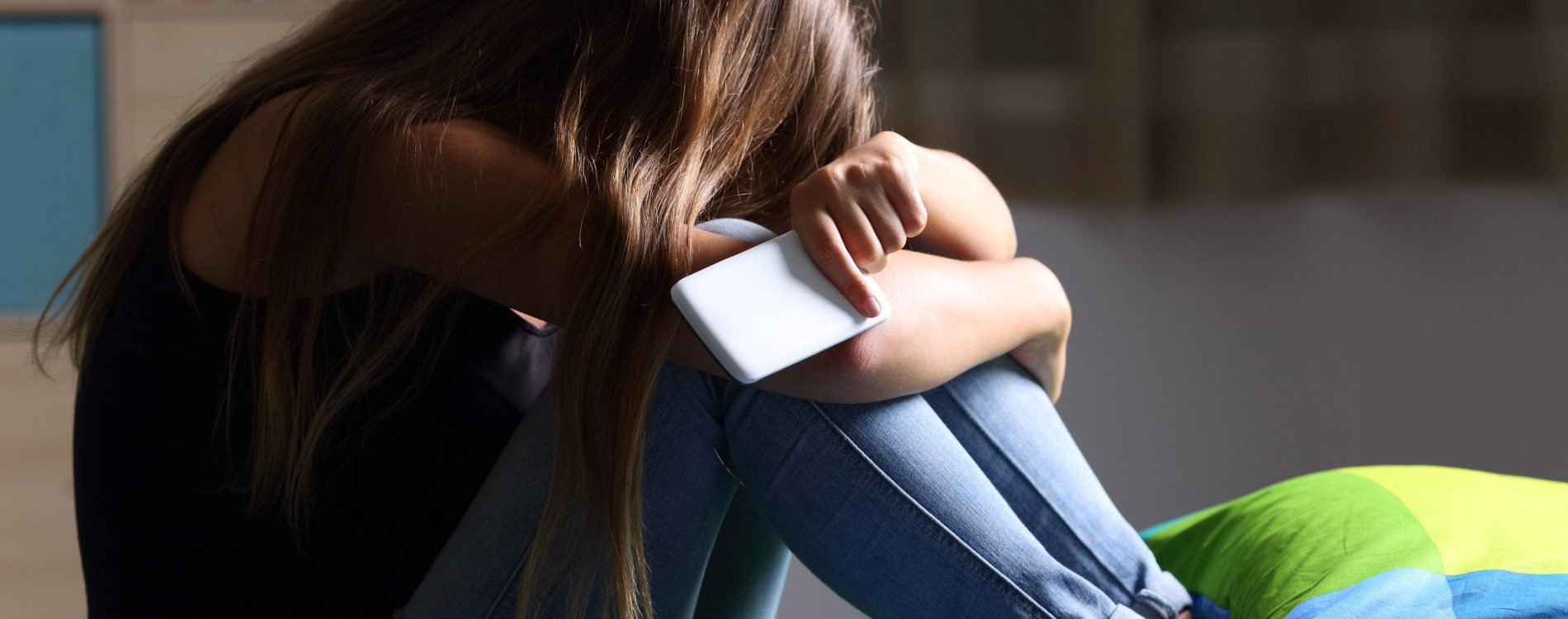Bullying can be a devastating experience for your child. The consequences of such abuse can last for years, even a lifetime…
Bullying could be defined as aggressive behavior that aims to hurt another person either physically or emotionally. Bullying takes effect if a certain form of aggression is repeated, such as frequent physical or verbal assault, spreading rumors, excluding the child from certain activities, or numerous combinations of similar destructive acts.

If we try to make further analyze how bullying works, then we can safely divide into bullying with or without physical presence. Bullying without a physical presence usually falls under the category of cyber violence because electronic means are used to inflict emotional harm. On this occasion, we would like to look at the most common forms of cyberbullying and how teachers and parents can respond accordingly.

Cyber stalking
This type of cyberbullying comes into play when the victim is stalked through social networks, and is sent a variety of messages or snap/story reactions in the form of threats, insults or half-truths. Then, certain photos of the victim are downloaded, digitally altered and used for further humiliation.
Many cyberbullies go with this form because they feel untouchable and think there are no real consequences if the violence is done digitally. To further fuel this thought, cyberbullies often create fake profiles and attack the victim through them. Physical bullying is usually an intimate affair with few witnesses. Cyberbullying, on the other hand, can turn into real spectacle and drama of epic proportions, especially after certain “gossip” groups are created that specialize in attacking individual students.

Anonymous bullying and impersonation
Many schools have problems with such gossip groups through the social network Instagram. Usually, a student will create a group named after the school and they will attract hundreds of students and encourage the students to leave anonymous messages. These messages can be extremely distasteful, and can insult and belittle children in a shockingly cruel way.

To make matters worse, many students take screenshots and share them with the victim being teased, further inflaming the matter. Often, the student who is the victim of this type of bullying uses a preconceived notion to guess who might be writing the bad things and, in many situations, that child will also start a similar campaign on social media. In this way, the victim also becomes the bully, so the vicious circle takes on an even deeper meaning.
Catfishing is also considered as another form of false representation! In this situation, the child who perpetrates peer violence takes several photos of the victim and then creates a profile on social networks and presents as the victim either to extract certain information or to undermine the credibility of the victim.

Impersonation, fraud, impersonation and blackmail
Outing, Trickery, and Fraping are three well-known forms of cyberbullying.
Outing is the deliberate and public posting of sensitive, private or embarrassing information about a particular child to other children in different groups. Kids will be kids, and it’s easy for them to confide, text or send provocative images to other children. The problem occurs when the cyberbullies get their hands on those screenshots/videos and starts forwarding it to third parties. This is where another form of cyber violence comes into play – Trickery is a form of deception where the cyberbully “befriends” the victim only to extract certain things that can later be used to further escalate the conflict.
On the other hand, impersonation, or frapping, is when a child enters another child’s account and starts a campaign of posting inappropriate content to all friends and followers. It may contain obscene statements, insults, or links to inappropriate content.
As one of the worst forms of cyber violence is online blackmail where, for example, compromising photos of the victim are used and unscrupulous services are demanded; if the child does not agree to do what is asked, the bully threatens to send the photos to x people. In order for the threat to carry weight, one photo is sent to a close friend of the victim, and the rest are kept as a leverage.

What can teachers and parents do to prevent cyberbullying?
A child who is a victim of bullying can be extremely disappointed, sad and disinterested in education. Slowly but surely, the victims become insecure, avoid going to school and socializing with classmates. Here and there, they find themselves on the verge of (self)injury, have difficulty sleeping and have no appetite. In addition to refusing to participate in various activities, victims either reject cell phone use or completely devote themselves to some form of interactive entertainment, such as movies or video games (as the mildest form of escapism).
Anyone who wants to, cannot but notice the signs, regardless of whether it is a teacher or a parent. After noticing that something is wrong, the next step is to talk and (in)directly encourage the child to open up, explaining that regardless of the situation, a solution can be found. At this moment, it is not yet known whether the problem is bullying or something completely different, and mutual coordination between the parent and the teacher is strongly advised. In most situations, a child who is a victim of peer violence experiences the situation either as extremely embarrassing or as a final, hopeless situation. Because of that, the victims have a big problem opening up, especially to a teacher who doesn’t feel close to them (there’s no way he can help me) or to parents, from whom they might be afraid or embarrassed.

If you see something, say something!
If a conversation with the victims do not help, conversations with students from their class or with their friends should come second. As we mentioned, cyberbullying spreads to a large number of people and chances are that other children are familiar with the nature of bullying. The approach and conversations should be careful and use as much discretion as possible, and after collecting enough proof, try to talk again with either the victim or the bully (provided that the perpetrator of peer violence has been discovered at this stage). From this moment, the head teacher, the school psychologist, and, depending on the complexity of the violence, the principal can be also involved. If these steps are the initiative of a teacher, the parent must be familiar with all the steps taken and jointly plan the methods for effectively suppressing the current act of bullying.

Parental supervision
As a last measure, which would probably be condemned by certain readers, is intruding into the child’s privacy and monitoring the conversations they lead through social networks. Some of the children delete certain conversations, put them in the archive or take screenshots, so it’s not a bad idea to go through the archive, that is, the gallery, when the child falls asleep. Knowing the passwords they use is of key importance for checking accounts from another device.
We are aware that what we are advising may not be right, but if there is a real problem with the child, getting a better insight into the whole situation could help you devise, on your own or with the psychologist, a better strategy for having the victim open up to you, finding the bully and finally resolving the problem, coming to terms with the consequences and taking steps towards full recovery and overcoming the trauma.

Proper education is of utmost importance
As a final step, further discussions are needed with both the victim and the bully, by the concerned parents, and by the school psychologist, as well as all of the teachers that were involved. We advise better password protection (such as two-factor authentication), protection of certain photos and data (to be seen only by friends), as well as blocking toxic “friends” who are a risk factor and can easily initialize some sort of bullying. Then, the students themselves need to be taught the value that comes from being selective about photos that are uploaded to social media because we live in an age where artificial intelligence can be used to quickly but effectively change photos into something extremely distasteful and attrocious.

On the other hand, the rest of the students should be properly informed and educated not to be participants or passive observers when cyberbullying is taking place. They should be constantly encouraged to confide in a teacher or a parent if they witness a problematic situation, and even to report bullying through social networks (In the case of Instagram gossip groups, many were shut down when a teacher organized enough people to report the group). If we all remain silent or add fuel to the fire, the situation can go from bad to worse, and the consequences of such abuse can last for years, even a lifetime.
All of this has deep roots in e-diseases and the effects of technology on physical and mental health. We wrote more on this topic here!







